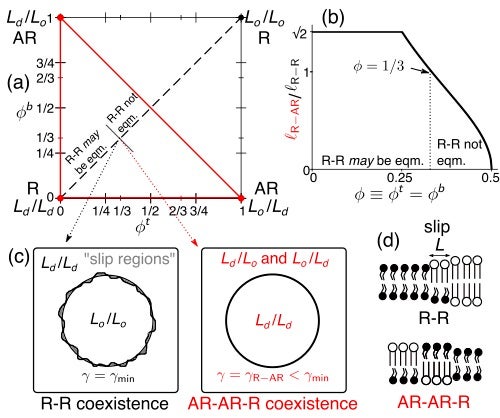PDO News
November 23rd, 2015
Posted in PDO News
John Williamson and Peter published a Comment in Physical Review Letters about the role of line tension in determining the nature of phase separation in lipid bilayers.
We address a recent article: “Elastic Membrane Deformations Govern Interleaflet Coupling of Lipid-Ordered Domains”, by T. R. Galimzyanov, R. J. Molotkovsky, M. E. Bozdaganyan, F. S. Cohen, P. Pohl, and S. A. Akimov, Phys. Rev. Lett. 115, 088101 (2015). They calculate the tilt of lipids at the interface between domains, and thus provide a method for calculating line tensions between phases. They show that the interface between registered domains has a `slip layer’ of antiregistration, where each leaflet has a different phase.
In their paper they argue that the line tension they have calculated explains domain registration between leaflets, with no need for the direct (area-dependent) inter-leaflet coupling often considered. We show that this is not quite correct, and that one needs to consider the entire line energy for given composition(involving the length of interface) in order to predict equilibrium states. When this is done properly, one tension alone does not in general explain equilibrium domain registration.

(a) Partial diagram of two-phase R-R (black) and three phase AR-AR-R (red) coexistences for phi_b=phi_t=phi = 1/2 [the full diagram is symmetric under inversion through (0.5,0.5)]. (b) Minimal R-AR or R-R interface length, comparing AR-AR-R and R-R coexistence. (c) Morphology at phi=1/3, beyond which AR-AR-R decreases the thickness-mismatched interface length. (d) R-R coexistence and AR-AR-R configuration. “R” denotes a registered phase and “AR” denotes and anti-registered phase.
PDO News
November 23rd, 2015